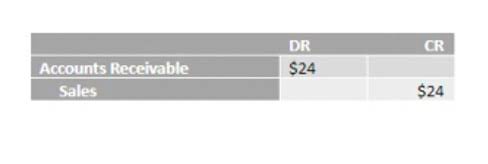
Our expert bookkeepers here at Bench have built a profit and loss statement template in Excel. You can use it to turn your business’ financial information into a P&L statement. We’ve created a profit and loss statement for an imaginary small business—Terracotta Warriors, a supplies store for potted plant enthusiasts. Here’s how you put one together, how to read it, and why profit and loss statements are important for running your business. Required by lending institutions and investors alike, a profit and loss statement can also help you pinpoint areas of success as well as spots where your business may need additional help.
Income Accounts vs Expenditure Accounts

If you have any additional income not included in your revenue totals above, such as interest income or dividends from investments, you’ll want to include them here. Once added to your operating profit, the total is earnings before interest, taxes, depreciation, and amortization, otherwise known as EBITDA. Once you have calculated your revenue and your cost of goods sold, you’ll just need to subtract the cost of goods sold to arrive at your gross profit number.
What Is the Difference Between a P&L Statement and a Balance Sheet?
Within accounting circles, a profit and loss statement is sometimes also known as an income statement. An income statement is one of the four main financial statements prepared by businesses for tax and other business purposes. At its most basic, the profit and loss statement gives users information about a business’s revenue, its expenses, and its net income. A profit and loss (P&L) statement, also known as an income statement, is a financial https://www.bookstime.com/ statement that summarizes the revenues, costs, expenses, and profits/losses of a company during a specified period. These records provide information about a company’s ability to generate revenues, manage costs, and make profits. The balance sheet reports the assets, liabilities, and shareholder equity at a specific point in time, while a P&L statement summarizes a company’s revenues, costs, and expenses during a specific period.
Example of a profit and loss statement
This latter method makes a P&L statement more complex, as the earnings it reports include revenue billed, accounts receivable and accounts payable calculations. Law firms have the same financial reporting requirements as any other public or private business. Firms are, for example, required to prepare profit and loss statements regardless of the accounting method the firm chooses to use. A P&L statement, also called an income statement, is a record of income and expenses that reports the law firm’s net profit or loss for a specific reporting period. Understanding and interpreting your law firm’s financial statements is key to making informed, strategic decisions that drive success and growth.
- The balance sheet reports the assets, liabilities, and shareholders’ equity at a point in time.
- Financial statements are essential tools for monitoring your law firm’s financial health and making informed business decisions.
- Firms often publish various versions of profit in their financial statements.
- Equity represents the owner’s residual interest in the firm’s assets after deducting liabilities.
- To get started, let’s get on the same page about the business’s major financial concepts and key terms to know.
When you group together balance sheets for several periods, the result is as if you have your own crystal ball, showing your firm’s financial trends. The balance sheet displays the balance of your firm’s assets, liabilities, and the owners’ equity in your firm. Your Income Statement will break down your income and expenses based on how you set up your chart of accounts.
Realized Profits and Loss
- For example, if you’re audited by the IRS at any point, you will need to show financial statements demonstrating your activities and how they have contributed to your current financial situations.
- Want to learn more about how calculating profit and loss can help you grow your business?
- But if you want to draw up your own P&L statements (or if you want to understand exactly what goes into generating income statements), we have a short guide below.
- Operating earnings are sometimes called operating profit or operating income.
- This method is commonly used by smaller companies as well as people who want to manage their personal finances.
- Law firms, like many businesses, both large and small, must keep track of their financial health to ensure they are performing optimally.
LegalZoom is not a law firm and does not provide legal advice, except where authorized through its subsidiary law firm LZ Legal Services, LLC. Use of our products and services is governed by our Terms of Use and Privacy Policy. profit in law statement Your retained earnings statement shows how owners’ equity has changed in a given period. You can distribute profit to the owners/shareholders as dividends or reinvest it back into the company to fund future growth.

On the other hand, do your expenses make sense for the time period examined? Some costs like rent and utilities might be fixed, while others like supplies or wages could vary. It’s good to know if a surge in profit came from gradual growth or a specific event or promotion. Once you know whether your business has made money or not, it’s a good idea to take a closer look at your income streams and expenses.
- In some states, the information on this website may be considered a lawyer referral service.
- Of course, profitability depends on the activities that contribute to your business.
- If you do, you should have easy access to your company’s receipts, invoices, pay stubs, credit card payments, tax data, accrued interest, and more so you can sit down and start running the numbers.
- If you sell a physical product, direct costs can also be called COGS, or cost of goods sold.

You might also want to identify nonrecurring expenses, such as furniture costs. If the P&L statement reflects that a company does not generate enough operating income to adequately cover current loan payments, banks are less likely to loan additional funds. There are also situations in which a P&L statement can help you weather a potential storm. For example, if you’re audited by the IRS at any point, you will need to show financial statements demonstrating your activities and how they have contributed to your current financial situations.
